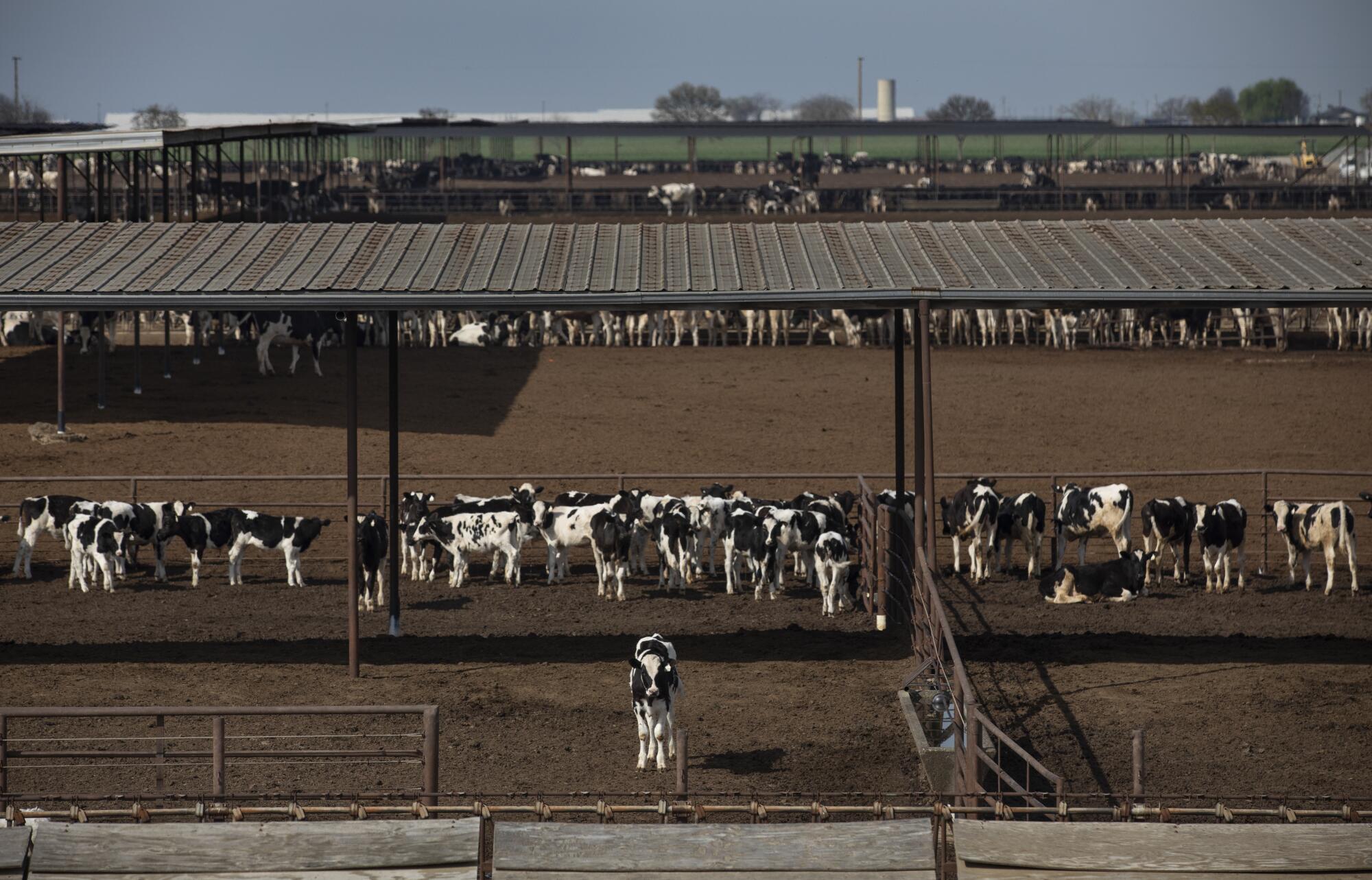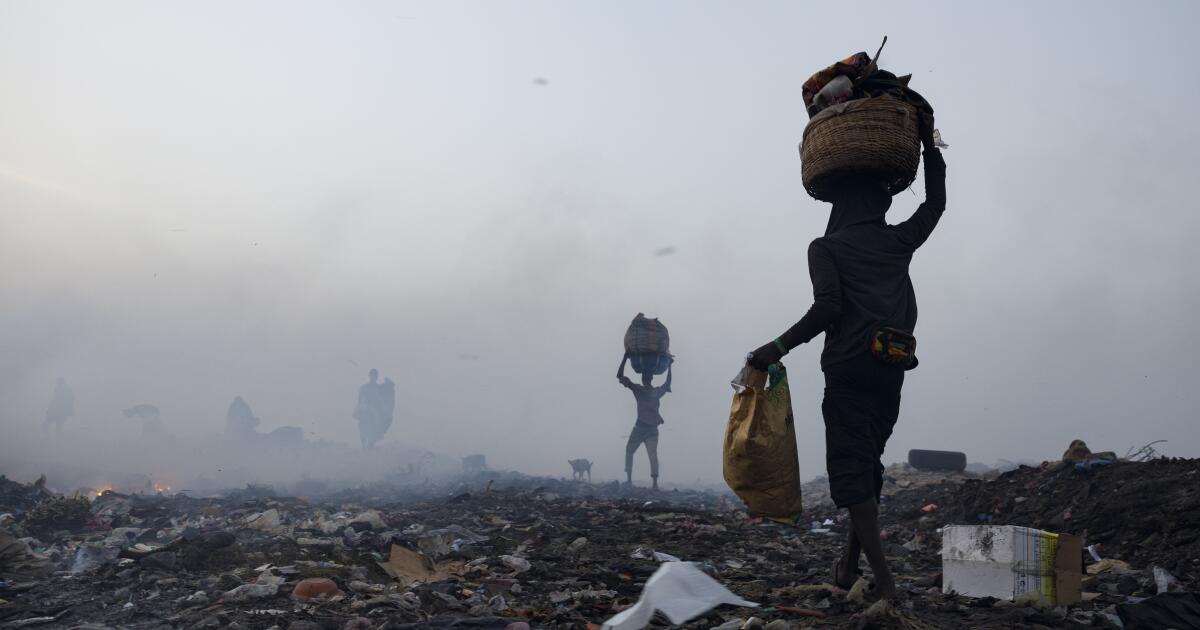The world is moving in a perilous direction when it comes to planet-warming methane emissions, which are soaring to record highs driven largely by human activity, new research warns.
Although many people associate methane with cow burps and melting permafrost, a paper published this week in the journal Earth System Science Data found that global methane emissions over the last five years have risen faster than ever — and at least two-thirds of those emissions are now coming from human sources.
In April of this year, methane concentrations reached a record high of 1,931 parts per billion — an increase of 11 ppb compared with the previous year.
Experts said the findings are deeply concerning, as they put the planet on track to blow far beyond the desired limit of 2.7 degrees of warming over the pre-industrial era — an international benchmark often referenced as 1.5 degrees Celsius. In fact, methane contributed to nearly 1 degree of global warming in the 2010s.
“In terms of methane’s contribution, we’re on a trajectory that is consistent with about 3 degrees C right now,” said Rob Jackson, the study’s lead author, who is also a climate scientist at Stanford and chair of the Global Carbon Project. “We’re far from 1.5 or even 2 degrees C when you look just at methane alone.”
The 3 degree Celsius scenario — roughly 5.4 degrees Fahrenheit — would have potentially disastrous consequences, including rapid melting of ice sheets, prolonged heat waves and droughts, water shortages, famine, and political and social unrest, among other outcomes outlined by the Intergovernmental Panel on Climate Change.
But although methane is 30 to 80 times stronger at warming than CO2, ton for ton, it does have one advantage: It is also relatively short-lived. Methane lasts about a decade in the atmosphere compared with CO2, which lasts for hundreds of years if not far longer.
“It’s really the only lever we have to slow warming in the next decade or two,” Jackson said. “We really can’t do anything about the trillion tons of carbon dioxide in the air right now on that time frame, but for methane, we could see concentrations return to pre-industrial levels within a decade if we could stop anthropogenic emissions with a magic wand.”
“That’s not likely any time soon,” he added, “but that should be our goal. Doing that would net us at least half a degree [Celsius] of reduced warming.”
The source of methane emissions can be broadly broken down into two categories: human sources, which primarily stem from agriculture, fossil fuels, landfills and waste; and natural sources such as wetlands, bogs and marshes that release methane when bacteria breaks down their organic matter.
The paper found that emissions from both categories are increasing, although human sources appear to be generating a larger and larger share, now representing about 65% of estimated emissions compared with 60% in 2020, Jackson said. (The actual proportion may be even higher depending on how some sources, such as emissions from dams and reservoirs, are classified.)
However, there is also growing concern about methane emissions from natural systems.
Rising global temperatures are increasing microbial activity in tropical hot spots such as the Congo, Amazon and Southeast Asia, which are releasing more methane that could in turn contribute to more warming in a worrisome feedback loop, Jackson said.
“The fact that everything is still increasing is disconcerting. The most concerning part for me, though, is the potential for increased natural emissions, particularly in the tropics,” he said. “We think we’re starting to see that, but we’ll really know for sure in another four or five years — and that’s really bad news if it starts to happen at large scale.”
Arctic permafrost — or soil that was once permanently frozen — is also thawing amid record-high global temperatures and releasing carbon and methane into the atmosphere.
Evan Sherwin, a research scientist at the Lawrence Berkeley Laboratory who was not involved with the study, said its findings are important and comprehensive, although not altogether surprising.
“It’s a pretty stark warning to us — especially given that there have been so many efforts to mitigate methane emissions — that the share of methane emissions that are from human-caused sources appears to be rising,” Sherwin said.
He said there is still a good degree of uncertainty around which trajectory the planet is on when it comes to warming, particularly because humanity still has a good deal of control over its emissions between now and the end of the century.

Agriculture is one of several human-caused sources of methane. Here, Holstein cows fill a California dairy farm.
(Mel Melcon / Los Angeles Times)
But if methane emissions continue to rise at roughly the current rate, and CO2 emissions are not cut as rapidly as they need to be, 3 degrees Celsius of warming “does not sound at all out of the question to me,” he said.
Like Jackson, he said the potential for increased emissions from natural sources is worrisome and warrants additional study, particularly around tropical ecosystems.
However, he noted that methane emissions from human sources aren’t going up everywhere in the world. In Europe, for example, emissions have largely decreased over the last two decades, while Korea, Japan and Australasia stayed roughly the same, the study shows. (Broad calculations for the United States indicate an overall increase in that time frame.)
“That’s a sign that it is possible to hold methane emissions steady, or even reduce emissions pretty substantially, which I think is a promising sign,” Sherwin said.
In fact, the finding that humans are now the main driver of methane emission could in some ways be viewed as a silver lining in that it’s something that can potentially be mitigated or controlled, Sherwin added.
“It’s a huge lever that we have for buying time,” he said. “If we take large-scale efforts to reduce methane emissions — and I should say nitrous oxide as well, and other shorter-lived greenhouse gases — we could buy ourselves decades of time to reduce carbon dioxide emissions.”
Such efforts are underway. Among the most promising are new rules from the U.S. Environmental Protection Agency that will strengthen emissions reporting requirements from oil and natural gas facilities in hopes of reducing methane and other pollutants.
Last year, California passed groundbreaking legislation that will require large U.S.-based companies doing business in the state to disclose their annual greenhouse gas emissions beginning in 2026, the first such rule in the nation.
State bills geared toward plugging orphaned oil wells and setting methane emissions targets for dairy and livestock producers could also make a difference, as can efforts to electrify homes and buildings, said Jackson, who recently wrote a book on the clean energy transition.
But such efforts cannot belie the fact that emissions are continuing to accelerate in a dangerous manner. A 2021 global methane pledge signed by 158 countries, including the U.S., aims to reduce global methane emissions at least 30% from 2020 levels by 2030 but has “not really even started to happen yet,” Jackson said.
“There are no greenhouse gases going down in the atmosphere yet, and for gases like methane, the levels are going up faster than before,” he said. “It can’t continue for a habitable planet. It looks like we’re heading toward 3 degrees C, which is a terrifying prospect, and I hope that it’s wrong.”
Newsletter
Toward a more sustainable California
Get Boiling Point, our newsletter exploring climate change, energy and the environment, and become part of the conversation — and the solution.
You may occasionally receive promotional content from the Los Angeles Times.

